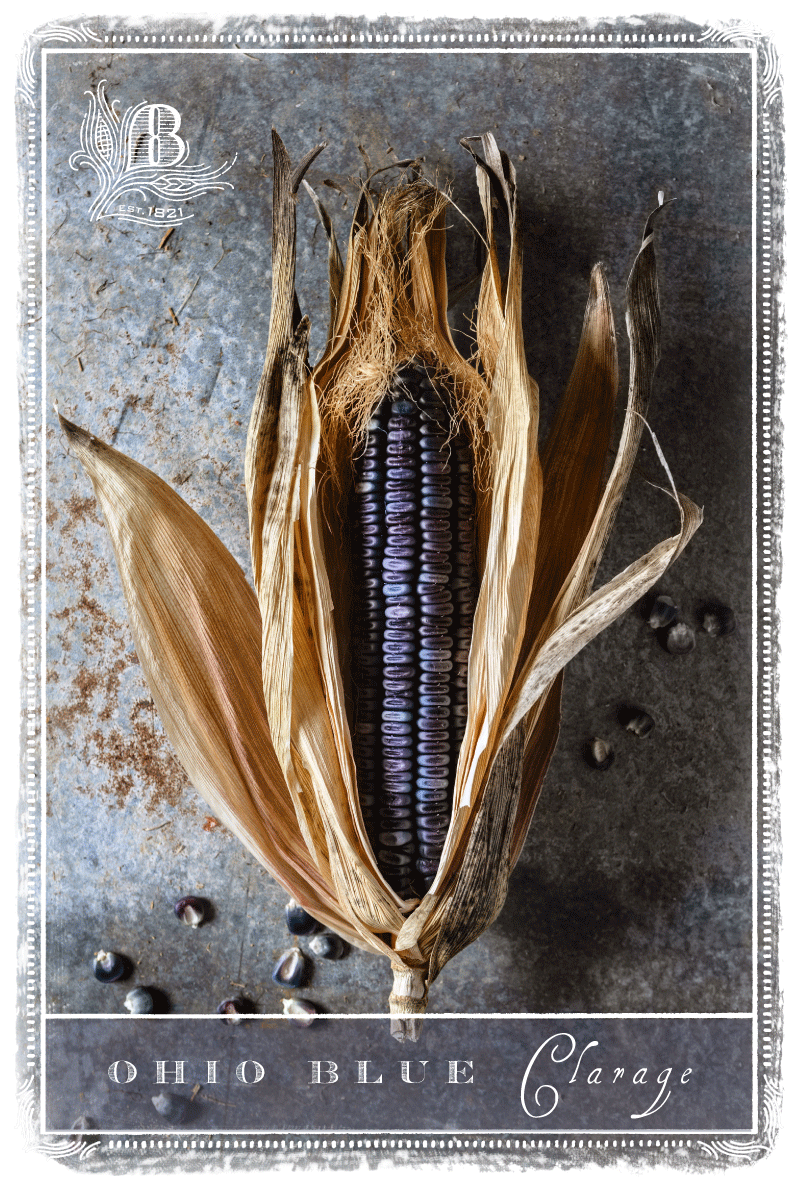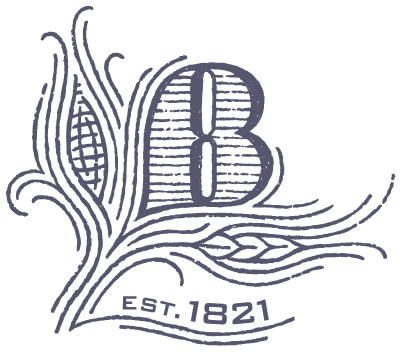Our cornmeal is milled on a Meadows stone grist mill built in the late 1940’s. Milling slowly so to keep the stones cool the cornmeal is a whole grain product containing oil, protein and starch. The field dried grain was live seed when milled and should be treated as fresh produce by keeping cool and using it within a couple of months. Branstrator Farm has a photovoltaic system that produces electricity to run the mill.

Ohio Blue Clarage
Blue Clarage as a variety has been grown in southern Ohio and neighboring areas for over a hundred years. The 10' plants are really beautiful and grow well in our climate and soil.

Blue Clarage cornmeal is light blue, a little sweet and has subtle flavors associated with the anthocyanin content. It makes outstanding pancakes, cornbread and can add its color to any recipe using yellow or white cornmeal.
The grains can be processed by nixtamalization to produce masa for delicious blue tortillas and tamales.

Leaming Yellow Corn
Leaming corn was developed by selection as a first generation yellow dent corn whose parents were northern flint corn and southern gourdseed corn. Doing this work at his farm in Clinton County Jacob selected for early maturity and good plant health from corn obtained in Hamilton County. Open pollinated corn has a much higher protein than comercial hybrid corn and an intense corn terrior reflecting our coil and climate. The corn is produced in a regenerative growing system using long rotations, cover crops and no till planting.


Red Fife Wheat
Red Fife wheat is a landrace variety perhaps developed in Poland and first planted in North America in the 1840’s. This variety is listed with Slow Food’s Ark of Taste.
It grows well in our climate and is a tall plant that not only is delicious with excellent baking qualities but beautiful in the field. Being naturally disease resistant with a deep root system it doesn't need pesticides or much fertility. We grow Red fife in a long rotation with other crops and after harvest we plant a multi species cover crop to build soil biology.
The flour after stone milling is fluffy and fragrant. The Bread Lab reported 10.6% protein and a falling # of 302 with good strength and ease of handling. Quick breads and pancakes are delicious with a natural nutty flavor. Many people with wheat allergies have been able to enjoy heritage wheats like Red Fife.
Additional Information:
https://en.wikipedia-on-ipfs.org/wiki/Red_Fife_wheat.html
https://artsandculture.google.com/exhibit/red-fife-wheat-slow-food/AQWASwkK?hl=en
